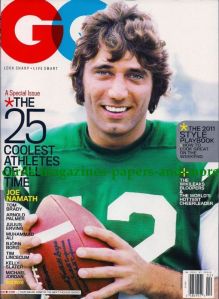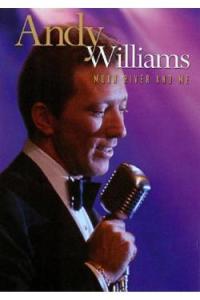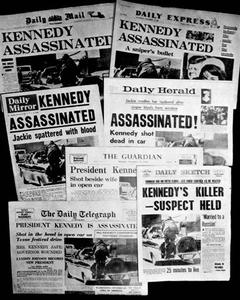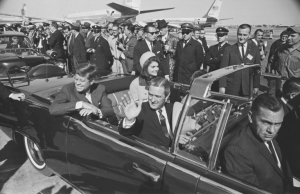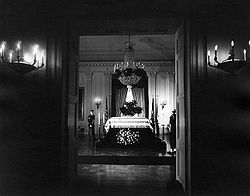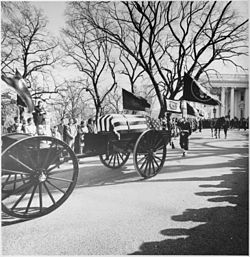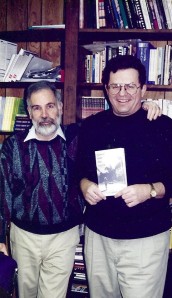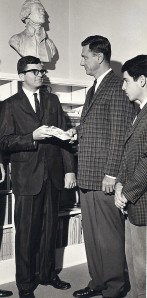 One of the greatest troubadours of my generation is Billy Joel, a poet and musician of genius, who shared his deepest emotions, and ours, over a lifetime of joys and tears. He is much more than a pop icon. He is the chronicler of an age in American life.
One of the greatest troubadours of my generation is Billy Joel, a poet and musician of genius, who shared his deepest emotions, and ours, over a lifetime of joys and tears. He is much more than a pop icon. He is the chronicler of an age in American life.
In one of my unpublished novels, Strange & Modern Phobias, two psychiatrists speculate on the psychiatric merits of Billy Joel’s greatest hits. It was my way of paying tribute to him. Here is the excerpt.
Albert Drexle had different tastes in music; and throughout their medical school and residency years together (the mid-1970s into the 1980s); Albert was fixated on the genius of rock and roller Billy Joel, whom he celebrated as the most psychologically aware troubadour of their generation. Rooming with Albert necessitated cohabitation with the albums of Billy Joel and enthusiastic lectures on how the composer’s lyrics were more meaningful to the listening public than any of the therapies that they were being taught as clinicians.
Bernie remembered Albert saying, “If we can learn to be as keen an observer of the human condition as Billy Joel, we have the possibility of being good doctors.”
Bernie heard the Billy Joel songs so often in Albert’ s presence that he learned the melodies and the lyrics by repetitive osmosis, but he never more than politely acknowledged that such music had lasting social value, or that it could affect the behaviors of anyone with more than sentimental emotion. Poet-musicians were entertainers, not philosophers, in Bernie’s reckoning.

To counter Albert’s insistence on the loud sublimity of rock and roll, Bernie substituted albums by Jean-Pierre Rampal, the French flute king, and the piano records of Ferrante and Teicher and Peter Nero. These Albert would tolerate, plus any flute album by Herbie Mann in the jazz idiom. Thus a musical modus vivendi was achieved in their shared environment.
In recalling Albert’s insistence on the psychological insights of Billy Joel, Bernie decided to re-visit the entertainer’s greatest hits; and, on impulse, he saw one of the ubiquitous block-size, everything-you-want-twenty-four-hours-a-day marts and went in to purchase a CD. He had not gone into such a store during his married life since they were considered so déclassé in Joyce’s social league. The hour was late; but there were customers, maybe second-shift workers from the few remaining cotton mills that produced sheets and socks and jeans for someone other than the block-sized chain marts that got their cotton goods from factories in places like Mexico and Hong Kong. The shoppers looked tired, and they were price conscious about everything because they had to in the blue-collar rank to which they were assigned. They looked at Bernie passing in his $2,000 suit and his $300 shoes, and he could see the question in their eyes, “What the hell is he doing here?”
The city block under a single roof store was divided into departments, but the aisles were not laid out in a grid. They were mazelike so that people would get lost among the high shelves of merchandise and feel the impulse to buy their way out. Bernie wandered through the necessary, but mostly unnecessary, junk of American civilization and felt claustrophobic as the stuff surrounded him, confined him, and threatened to claim him as a helpless shopper and gnaw at his wallet.
 Finally, he found the music department and was informed by the signage that the mart chain was the largest seller of tapes and CDs in the known universe. Of course, they had a CD copy of Billy Joel, Greatest Hits, Volume I and Volume II. Bernie renegotiated the maze back to the front of the store and paid cash for the CD to a sad-eyed cashier, a woman with white hair, who would have preferred to spend her retirement at home but couldn’t because of the cost of her husband’s medications, so she had to work (nights was all she could get) just enough hours to be legally part-time so the mart wouldn’t have to provide health benefits, but that’s the way it goes these days. The cashier told Bernie this while she rang up the register, made change, and put his CD into a plastic bag—all this in response to his simple rhetorical question, “How are you tonight?”
Finally, he found the music department and was informed by the signage that the mart chain was the largest seller of tapes and CDs in the known universe. Of course, they had a CD copy of Billy Joel, Greatest Hits, Volume I and Volume II. Bernie renegotiated the maze back to the front of the store and paid cash for the CD to a sad-eyed cashier, a woman with white hair, who would have preferred to spend her retirement at home but couldn’t because of the cost of her husband’s medications, so she had to work (nights was all she could get) just enough hours to be legally part-time so the mart wouldn’t have to provide health benefits, but that’s the way it goes these days. The cashier told Bernie this while she rang up the register, made change, and put his CD into a plastic bag—all this in response to his simple rhetorical question, “How are you tonight?”
It was after midnight when Bernie reached his assigned space in the downtown parking garage. He wanted to play the Billy Joel CD before nervously trotting the half-block to the gothic apartment tower where he temporarily resided, but first he had to pee. The garage level where he parked exhibited no traffic, so Bernie dared to do what had previously been unthinkable. He exited his car, walked to a convenient cement pillar, and relieved himself hard and pooling where cultured men should not go. The zipping up was not without a sense of reckless enjoyment, but Bernie wondered if his urine would stink with the sunrise and be blamed on some homeless man seeking refuge from the rain.
Since Bernie had identified no CD player in the penthouse shrine to the 1920s, and his Mercedes had a state-of-the-art sound system, Bernie fed the new CD into the slot, locked the car doors, reclined the power driver’s seat, and settled his nerves for the shock of Billy Joel’s rock and roll therapy. Bernie tried not to anticipate the music. His intent was to have it roll over him like a memory-bearing wave that somehow contained the psychological insight that Albert had touted.

The first cut was Piano Man, a song that described a bar scene peopled with disillusioned characters who were revealed in terse verses by the piano man who recognizes the loneliness of crowded places where people gather to escape the perceived failures of their lives. The tempo of the song was upbeat, but the lyrics captured a sadness inherent in many modern lives. Yes, Bernie had to agree—Piano Man was an accurate psychological assessment of bar flies.
“Congratulations, kid,” Bernie said, like one of the inebriants dropping a dollar bill into the piano man’s tip jar, “you summed it up better than a psych grad’s master thesis.”
Say Goodbye to Hollywood contained a line that said goodbye to his “baby,” and that reminder annoyed Bernie. New York State of Mind was a song about returning to a person’s roots, to one’s own reality after being out of touch. Bernie, however, was unable to conjure up the same sentimentality for Baltimore and a neighborhood that he knew he would not recognize should he ever return there.
The next cut, The Stranger, was what Albert considered a psychological epic. The lyrics were about the secrets of inner life, the self a person conceals even from a lover. Bernie could hear Albert’s commentary. “The secret self is about unfulfilled desires, things that we are afraid to reveal to each other. Our lover leaves us, and we can’t understand why. It’s not why! It’s who! On some levels we can’t communicate, so we will always be strangers to each other. And that’s how psychiatrists make a living—we bridge the gap. Billy Joel was right on. Hell, we hardly know the stranger in our self.”
a psychological epic. The lyrics were about the secrets of inner life, the self a person conceals even from a lover. Bernie could hear Albert’s commentary. “The secret self is about unfulfilled desires, things that we are afraid to reveal to each other. Our lover leaves us, and we can’t understand why. It’s not why! It’s who! On some levels we can’t communicate, so we will always be strangers to each other. And that’s how psychiatrists make a living—we bridge the gap. Billy Joel was right on. Hell, we hardly know the stranger in our self.”
“Oh, thanks,” Bernie said sarcastically to both Albert and Billy Joel. “Great analysis, but what’s the solution?”
The following cut seemed to provide a partial answer. Just The Way You Are was about relationship, acceptance, and commitment through good times and bad. The lyrical saxophone break provided moments for reflection, and Bernie recalled that he had often had to work at conversations with Joyce so as not to push her Southern panic buttons about race and class and the Democratic Party. In many ways, Bernie decided, Joyce had not been easy to talk to.
Before Bernie’s thoughts became too specific, the rush of Movin’ Out (Anthony’s Song) overtook him. The song was about expectations vs. reality. In summing up what the songwriter observes from a working-class perspective, he asks, is that all we get from a lifetime of effort? His response is to roar away on a motorcycle rather than conform to so dismal a future. Bernie recognized the syndrome. Working-class kids witnessed the struggle of their parents living from payday to payday, and they rebelled. They wanted the lifestyle that they saw advertised on television, and they saw that obtaining it had nothing to do with social or moral virtues.
The teenage rebellion theme was repeated in Only The Good Die Young, that Bernie recalled as having been banned by the Catholic Church, and My Life, which became an anthem of the youth culture. Bernie drifted in attention through four other cuts that had imbedded messages relevant to his circumstances, but he missed them. Then the staccato beat of Pressure pounded him back on point.

“Right,” Bernie said into the sound waves, “I’ve got all the advantages, but I still can’t deal with pressure. So what’s the benefit of a protected life of privilege and some ritualistic faith if you cannot deal with pressure?”
Pressure was one of Albert’s favorite diagnostic songs. Bernie supposed that Albert even played the song for certain dysfunctional patients as a kind of wake-up call to treatment. Bernie had given Albert a wooden sign long ago for his birthday. The lettering was deeply routed into the wood like an old-fashioned doctor’s shingle. The lettering read: Drexel and Joel, Rock & Roll Psychotherapy. It was given as a joke; but Albert beamed instead of laughed, and, to Bernie’s chagrin, the damn sign hung prominently in his office ever since.
 Allentown was another Billy Joel composition that Albert considered worthy of a graduate degree in either sociology or psychology. The song correctly encapsulated the failed promise of The American Dream for the children of WWII-era working-class parents. The post-war was industrial collapse, the loss of blue-collar jobs, and the resulting clinical depression was artistically rendered. Bernie did not treat these people because generally, they could not afford psychiatrists, and that reality forced Bernie to realize how disconnected he was from most of the working population of the country, how far removed he was from the desperate old woman cashier at the everything mart.
Allentown was another Billy Joel composition that Albert considered worthy of a graduate degree in either sociology or psychology. The song correctly encapsulated the failed promise of The American Dream for the children of WWII-era working-class parents. The post-war was industrial collapse, the loss of blue-collar jobs, and the resulting clinical depression was artistically rendered. Bernie did not treat these people because generally, they could not afford psychiatrists, and that reality forced Bernie to realize how disconnected he was from most of the working population of the country, how far removed he was from the desperate old woman cashier at the everything mart.
The following cut further isolated Bernie. It was another bit of Billy Joel genius that took the complex Vietnam experience and made it real and moving in less than five minutes. Bernie had avoided the draft and Vietnam combat by becoming a doctor. He had remained deferred until the war was over; but he had treated some of the inmates from that asylum and seen the consequences of their unnatural push into adulthood and horror, but Bernie had not experienced their bitterness, their loss. He had separated himself from his own generation, a generation going down into chaos together; and if he wept, he wept as an outsider to their torments.
Tell Her About It was a painful cut for Bernie to listen to 
because it underscored his communication problems with Joyce. In the beginning of their courtship and marriage, he had told her his career dreams and his hopes for a cultured lifestyle; but as their life settled into the seamless routine of their class, what was left to share about feelings and emotions except their critiques of the performance arts?
Uptown Girl and The Longest Time played while Bernie tried to identify the moment of disconnect with Joyce. When had their respective appointment books rescheduled their intimacy into a ritual that mimicked obligatory church going? Why had the two of them settled for a closed provincial culture? Wasn’t their refusal to live in the greater society a kind of self-proclaimed aristocracy? In their rejection of modernity and all its underclass problems, hadn’t they just pretended that underclass desperation and criminality was not happening? And in building walls against contact with the great masses of the unwanted, had they not also walled themselves way from their own emotional sensitivity? The analytical questions continued until Bernie heard the familiar opening bars of You’re Only Human (Second Wind), a song that Albert swore by.
 Albert considered that the Second Wind song provided excellent advice to patients suffering from depression due to feelings of inadequacy. The lyrics acknowledged the presence of heartbreak depression, but it then affirmed the arrival of a second wind and urged the listener to hang on. The song was both empathetic and encouraging to sufferers of a circumstantial depression, as differentiated from clinical depression such as a bi-polar disorder that requires drug therapy. Since many patients consulted psychiatrists for circumstantial, temporary disorders, Albert felt that the Billy Joel song had positive therapeutic value. Bernie, as a psychiatric resident student, thought that rock and roll had no place in the delivery of mental health services. Listening to the message of the song, locked in his car in a parking garage well after midnight, however, Bernie underwent a change of opinion.
Albert considered that the Second Wind song provided excellent advice to patients suffering from depression due to feelings of inadequacy. The lyrics acknowledged the presence of heartbreak depression, but it then affirmed the arrival of a second wind and urged the listener to hang on. The song was both empathetic and encouraging to sufferers of a circumstantial depression, as differentiated from clinical depression such as a bi-polar disorder that requires drug therapy. Since many patients consulted psychiatrists for circumstantial, temporary disorders, Albert felt that the Billy Joel song had positive therapeutic value. Bernie, as a psychiatric resident student, thought that rock and roll had no place in the delivery of mental health services. Listening to the message of the song, locked in his car in a parking garage well after midnight, however, Bernie underwent a change of opinion.

The last cut on the Greatest Hits album was The Night Is Still Young; and although young people probably thought that the song was about sexual endurance, Bernie took it to mean that his life was not over at age fifty-five. But what next? This life as lived in Charlotte was over. He might continue the practice of psychiatry, but the comfort zone of country club connections and charity board networking among the deranged of high society was lost to him. Joyce and her cache of elitists would see to that. Consulting Dr. Selkin would no longer be fashionable. He would be so “last year,” so unpardonable, as if he had driven Joyce into the arms of Marcel Swann with a bullwhip. Her story, told to intimates in powder room whispers, would be a Faulknerian doozy that implied a hidden darkness of character that made life with Bernie sound like a slow ride through a carnival horror show.”
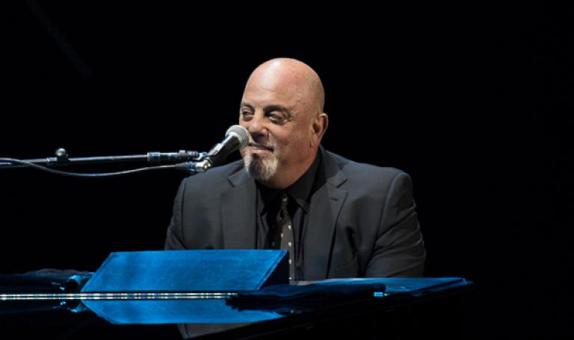

 It was a Sunday afternoon at a University of Virginia fraternity house located in a cluster of frat houses that overlooked an intramural field depression known as “Mad Bowl” when I met Bob Dylan and witnessed him rejected as a folk singer and song writer.
It was a Sunday afternoon at a University of Virginia fraternity house located in a cluster of frat houses that overlooked an intramural field depression known as “Mad Bowl” when I met Bob Dylan and witnessed him rejected as a folk singer and song writer. Clayton’s purpose on that Sunday afternoon was to have newcomer Bob Dylan and recorded folk singer Carolyn Hester sing a few songs as a measure of their live performance abilities. It was easy to pull the frat boys away from the ball game on television once they got an introduction to Carolyn Hester. She was 24 years old at the time and Hollywood gorgeous. Hester had already released two albums and was being compared to folk music star Joan Baez. Clayton was helping her with her live performance guitar playing, which was weak at the time. Hester stood against the living room wall and performed two unremembered songs. Her singing was strong and beautiful, but she missed some chords in the accompaniment.
Clayton’s purpose on that Sunday afternoon was to have newcomer Bob Dylan and recorded folk singer Carolyn Hester sing a few songs as a measure of their live performance abilities. It was easy to pull the frat boys away from the ball game on television once they got an introduction to Carolyn Hester. She was 24 years old at the time and Hollywood gorgeous. Hester had already released two albums and was being compared to folk music star Joan Baez. Clayton was helping her with her live performance guitar playing, which was weak at the time. Hester stood against the living room wall and performed two unremembered songs. Her singing was strong and beautiful, but she missed some chords in the accompaniment.
 invited Bob Dylan to play harmonica on sessions for her third album at Columbia Records. At a rehearsal session, Dylan met celebrated record producer John Hammond who signed him to a recording contract. Dylan’s first album on Columbia Records was released on March 19, 1962. The album made a great impression in the folk music community, but it was not commercially successful.
invited Bob Dylan to play harmonica on sessions for her third album at Columbia Records. At a rehearsal session, Dylan met celebrated record producer John Hammond who signed him to a recording contract. Dylan’s first album on Columbia Records was released on March 19, 1962. The album made a great impression in the folk music community, but it was not commercially successful.





















